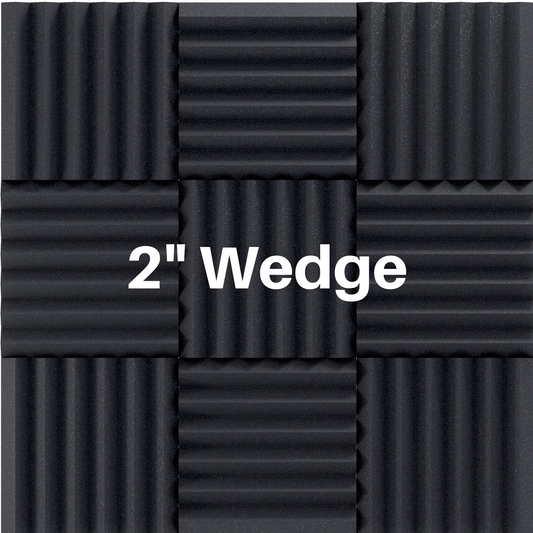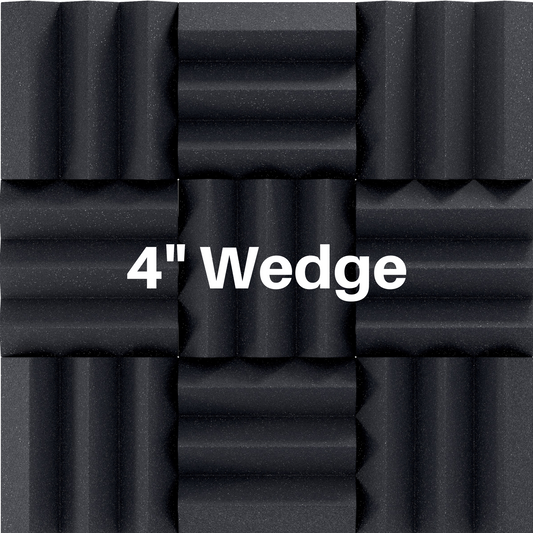Sound Treatment For A Drum Room
Share

The problem of being too loud is all too common for drummers everywhere. You can relate to this issue whether you live in a big city apartment and do not want to bother your neighbors during the day or you live in a family neighborhood and do not want the neighbors to hear you rocking out Saturday at midnight.
Sound treatment for a drum room can be pretty simple and only require some basic items being installed or strategically placed within the room or it can be a complex project that requires power tools and deep pockets. Below are three basic concepts we will explore so you can decide what type of treatment you want for your needs.
1. Treat the room with acoustic foam and other items (not soundproof)
2. Decoupling (soundproof)
3. Room within a room (soundproof)
Treat the room with acoustic foam and other items:
The first step is to make sure the drum kit is set up on top of a carpet, blanket, or something similar. This will act as a vibration absorbing mat. The next thing you can do is place a small or large pillow inside of the bass drum to muffle it. You can also use gel packs; these are small adhesive gel pieces that can be placed on the toms and snare to mute the drum.
Use acoustic foam and bass traps on the walls to help absorb vibrations. You can go as far as trying to tune your entire room or simply placing a couple panels on the wall to cut down on reverb in the room. If you have a room with parallel walls with reflective surfaces you may experience resonance or standing waves. Placing acoustic panels on opposing walls in a checkerboard position can help with these issues.
Seal the door. You can use weatherstripping to seal cracks in doors to stop the sound from being able to escape so freely. You can buy some weatherstripping on Amazon or at your local hardware store. 3M offers some great products. If you do not want to use weatherstripping then hang a blanket or comforter over the door when you are jamming. This will help cover the cracks and muffle the sounds a bit.
If you cannot afford sound treatments you can use stuff from around the house like sheets and blankets. Hang them around the drum kit from the ceiling. This will act as a noise muffler. You can also treat the door with weatherstripping or a draft stoppers to close gaps.
Decoupling:
This is a method of soundproofing that will require modification to the existing structure of a building. If you rent an apartment make sure to check with your landlord before going to work on your drum room.
The basic idea behind decoupling is to build a second wall, ceiling or floor in addition to the current one and add additional soundproofing materials within the second layer. If have neighbors on the floor below you who don’t like to hear your kick drum thump then decoupling your floor might be a good idea. This would be called creating a “floating floor”. On the other hand if you live on the bottom floor and have upstairs neighbors that don’t enjoy your crash cymbal sound then you could create a floating ceiling.
Room within a room:
Building a floating room is about as far as you can go to get a true soundproof experience. This would require decoupling the floor, walls and ceilings and even installing a second door. The inner wall is treated with soundproof insulation and there is an airspace in between the inner wall and outer wall. The floating floor is separated from the original floor with vibration sound absorbers and is treated with insulation as well. Magnetic door seals provide a great seal to prohibit sound transmission. These rooms can be expensive but if you are giving lessons every day or recording drums on the daily then you might need to invest in this so you don’t have to constantly worry about your neighbors complaining.
If you love drumming then you should play a lot! If your neighbors complain I hope we have given you some good ideas to try and help smooth out your relationship with them without having to stop rocking out! Please let us know if you have any additional tips or if you have any questions at all. Leave your questions or tips in the comments below.
SHOP Acoustic Foam
Read More:
Acoustic Foam For Music Studios





